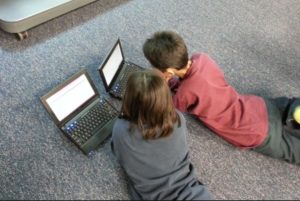In an article, Do Students Enjoy Writing? the latest UK data shows that while children and young people’s enjoyment of reading has been increasing in recent years, enjoyment of writing is heading in the opposite direction. So much so that the National Literacy Trust is now calling for a focus on writing for enjoyment in schools. Results of its sixth annual literacy survey of more than 32 000 eight- to 18-year-olds, released this month, show 44.8 per cent said they enjoy writing very much or quite a lot in 2015 – down from 49.3 per cent the previous year and 10 per cent lower than the 2015 figure for enjoyment of reading.
I pose the question, “How would I respond to this disappointing trend in attitudes to writing?”
What seems lacking is student motivation and engagement. The enjoyment of writing is greater enhanced by the learner choosing the topic.
Writing in the 21st century has changed and has expanded beyond the genres commonly taught and the development of traditional pieces. We now need to learning to write in a digital space- to think about using social tools for writing, coding, to write with precision and brevity, sometimes within 140 characters, to write using hyperlinks, to use the skills of curating, archiving and sharing.
How can you create the context to connect your students to a real audience beyond the classroom? By stimulating curiosity and encouraging learners to envisage a purpose for writing, inspiring learning can be fashioned.
First, you should become familiar with common tools such Twitter, Facebook, Seesaw, Blackboard Collaborate, Edmodo groups, Google docs, Sway, blogposts, WhatsApp, Skype groups, Padlet and Global Projects including Flat Connections. As educators, we cannot expect to be confident facilitators unless we have some working knowledge of digital tools.
Now for a purpose? What would learners like to find out? What do learners wish to say? Learners easily adapt to online communication to seek answers to their own questions. Martha Payne, a young school girl from Scotland, started her blog, NeverSeconds as a writing project. Her blog went viral and involved school children across the globe to write. With a reason to write, learners found their voice and expressed themselves in their unique style. A global audience is waiting-an audience of varying cultures, ages, faiths, gender, beliefs and experience.
Writing becomes authentic. This has been measured to increase motivation and engagement. Success can be shared with the school community as well as with wider audiences.
How can you enrich your learners’ experience of writing with a real audience beyond the classroom?

